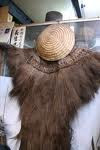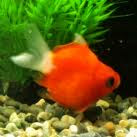[ . BACK to WORLDKIGO . TOP . ]
:::::::::::::::::::::::::::::::::::::::::::::::::::::::::::::::::::::::::::::::::::::::::::::::::::::
a piece of moss
crawls up the wall -
minomushi incognito
Because of all the rain, moss is growing everywhere and the straw raincoat bug uses it very efficiently as camoufflage.
:::::::::::::::::::::::::::::::::::::::::::::::::::::::::::::::::::::::::::::::::::::::::::::::::::::
minomushi, "straw raincoat bug" ,
case moth, bagworm, basketworm
蓑虫 larva of Psychidae
http://worldkigo2005.blogspot.com/2005/09/insects-mushi-05.html

minomushi with its normal "raincoat".
http://www.geocities.com/brisbane_moths/PSYCHIDAE.htm
:::::::::::::::::::::::::::::::::::::::::::::::::::::::::::::::::::::::::::::::::::::::::::::::::::::
 source : itoyo/basho
source : itoyo/basho
haiga by Kyoroku 許六画
Matsuo Basho is inviting his haiku friend Sodo to come over for a visit to a haiku meeting at Basho-An.
蓑虫の音を聞きに来よ草の庵
minomushi no ne o kiki ni koyo kusa no io
Come listen
to the sound of the bagworm! –
a grass hut
tr. Shirane
come to listen
to the sound of the bagworms!
my grass hut
Tr. Gabi Greve
. Yamaguchi Sodoo 山口素堂 Yamaguchi Sodo - .
Sodo wrote the essay "Minomushi no setsu" "Comment on the Bagworm" .
Shirane, Traces of Dreams - page 173
source : http://books.google.co.jp
:::::::::::::::::::::::::::::::::::::::::::::::::::::::::::::::::::::::::::::::::::::::::::::::::::::
 下闇や虫もふらふら蓑作る
下闇や虫もふらふら蓑作る
shita yami ya mushi mo fura-fura mino tsukuru
darkness beneath the trees -
the bagworm, too, shakes
to make its raincoat
Kobayashi Issa
Tr. Gabi Greve
mo implies that humans also make straw raincoats.
Translation and comment by Chris Drake:
in deep shade
a moth, too, makes a raincoat
swaying, shaking
This summer hokku is from the 6th month (July) of 1816. The "too" here seems to refer to the fact that not only humans but also female bagworm moth larvae make straw raincoats. As the female moth larva stitches various stalks, fibers, and leaves from the host tree together into a surrounding protective bag or case that vaguely resembles a straw raincoat, she causes the bag or case to sway and shake, almost the way a straw raincoat sways and shakes as the pieces of straw making it up are stitched together and then when the person walks with it on.
In this hokku a female moth larva has fastened herself to a lower, deeply shaded limb of a tree or tall bush with silk thread, and she also uses the thread to tie together her fairly long case-like nest, which hangs down below her head while her head remains outside at the top. As she attaches more and more materials, the whole bag-like nest, which is hanging down from a limb, sways and shakes more and more with her motions, so she may have been easy to spot for Issa.
The greatest swaying and swinging takes place in early autumn, when males leave the bags to mate at other bags and then quickly die. By July, the time of this hokku, the bag or case is fairly long, and the female has attached all sorts of generally long, thin materials to it to make it stronger.
And here is an old photo of some men in traditional straw raincoats:
 source : did-you-know
source : did-you-know
The resemblance is the basis for the moth's Japanese name, which means "straw raincoat bug," although Issa doesn't use the name of the moth here. I think Issa finds the swaying and shaking both fascinating and humorous, and he may be imagining what it would be like on a rainy day to see humans swinging and swaying as vigorously as this moth up and down streets and roads. I'm reminded of a Hiroshige woodblock print or scenes from Hokusai's manga showing people in various poses on windy days.
:::::::::::::::::::::::::::::::::::::::::::::::::::::::::::::::::::::::::::::::::::::::::::::::::::
minomushi 蓑虫 "straw raincoat bug"
case moth, bagworm, basketworm
larva of Psychidae
Other Japanese names for the minomushi,
kigo for all autumn
child of the devil, oni no ko 鬼の子(おにのこ)
child abandoned by the devil, oni no sutego 鬼の捨子(おにのすてご)
child without relatives, minashigo みなし子(みなしご)
child without parents, oya nashi go 親無子(おやなしご)
woodcutting bug, kikori mushi 木樵虫(きこりむし)
the bagworm is making a sound, minomushi naku
蓑虫鳴く(みのむしなく)
The sound is a bit like "chii chii" (father, father), hence people of old thought a child was abandoned by the demons and cried.
Sei Shonagon has already written about this "child of the devil", which was left by its parents and is crying out for hunger . . .
 みのむしや秋ひだるしと鳴なめり
みのむしや秋ひだるしと鳴なめり
minomushi ya aki hidarushi to naku nameri
this devil bagworm !
it seems to call out :
"I am hungry in autumn"
. Yosa Buson 与謝蕪村 - (1715-1783) .
:::::::::::::::::::::::::::::::::::::::::::::::::::::::::::::::::::::::::::::::::::::::::::::::::::
some comments
a straw raincoat bug - what a wonderfully descriptive name! i love it.
.....
I love this too, Gabi. I see Shirane translates minomushi as 'bagworm':
minomushi no ne o kiki ni koyo kusa no io
Come listen
to the sound of the bagworm! –
a grass hut
(Basho)
.....
yes, I like this, gabi...
I know bagworms well. It was my job, as a kid, to pick all the bagworms off our old evergreen tree.
I loved to watch them twist and dance sometimes of the limbs
.....
Nice one, Gabi. Unfortunately, without your link, I wouldn't know what minomushi meant . . . and on-line dictionaries didn't help. Guess you'd need a footnote if you published this elsewhere.
Great imagery . . .
.....
What an absolutely fascinating insect, Gabi!
Thanks for this... I've never seen one before.
:::::::::::::::::::::::::::::::::::::::::::::::::::::::::::::::::::::::::::::::::::::::::::::::::::::
芭蕉以降みのむしの声は誰も聞かず
Bashô ikô minomushi no koe wa dare mo kikazu
after Basho
no one has heard
a bagworm’s voice
Shimatani Seiroo 島谷征良, Seiro Shimatani (1949 - )
source : Tr. Fay Aoyagi
:::::::::::::::::::::::::::::::::::::::::::::::::::::::::::::::::::::::::::::::::::::::::::::::::::::
 mino 蓑/簑 straw raincoat
mino 蓑/簑 straw raincoat
 Tea cup by Okayama Junzoo.
Tea cup by Okayama Junzoo.
Here is a monkey, wearing a mino coad from large leaves, as depicted in the famous
scroll of frolicking animals.
. Choojuu-giga scrolls (choju giga) 鳥獣戯画
. kappa 合羽 raincoats .
made from impregnated paper

:::::::::::::::::::::::::::::::::::::::::::::::::::::::::::::::::::::::::::::::::::::::::::::::::::::::
. Sarumino 猿蓑 Monkey's Raincoat .
Monkey's Straw Raincoat
Das Affenmäntelchen
Le Manteau de pluie du Singe
(Tr. René Sieffert 1986)
MONKEY'S RAINCOAT (SARUMINO):
Linked Poetry of the Basho School
translated from the Japanese by Lenore Mayhew Rutland,
Vermont: 1985 895.61 SAR
Monkey's Raincoat came about in 1690 when the poet Basho and a friend, Otokuni, made a trip to the capital city of Edo (now Tokyo). The two invited sic other poets to help them celebrate the occasion by composing a renga. As the basho, Basho wrote the lead verses. "Let's squeeze the juice from our bones", Basho enthused.
Winter's first rain
Monkey needs
A raincoat too.
The renga has been compared to the verse debates conducted by medieval troubadours. Called partumens, these debates provided entertainment for aristocratic gatherings. At about the same time in Japan, Lady Murasaki in her masterpiece The Tale of Genji described the members of court passing the time by making a renga. It would be the great poet Basho (1644-1694) who transformed the renga from a game to a profound art.
source : fearlessreader.blogspot.com
. Matsuo Basho 松尾芭蕉 - Archives of the WKD .
:::::::::::::::::::::::::::::::::::::::::::::::::::::::::::::::::::::::::::::::::::::::::::::::::::::
humanity kigo for all winter
. minobooshi 蓑帽子(みのぼうし)
long straw winter hat
yukimino 雪蓑(ゆきみの)
snow jacket / coat made from straw
.................................................................................
observance kigo for mid-winter
okami 岡見 (おかみ) "viewing from the hill"
sakasa mino 逆蓑(さかさみの)
straw coat upside down
It was custom on the last day of the year to wear a straw coat upside down, walk on a hill overlooking the home and thus be able to see the good and bad fortune for the coming year.
To wear the mino coat upside-down is a practise in fortunetelling.
It dates back to Jinmu Tenno, who is said to be the first to perform this ritual.
:::::::::::::::::::::::::::::::::::::::::::::::::::::::::::::::::::::::::::::::::::::::::::::::::::::
- - - - - Matsuo Basho
降らずとも 竹植る日は 蓑と笠
furazu tomo take uu hi wa mino to kasa
even if it does not rain
they plant on bamboo planting day -
a mino-raincoat and a rain-hat
Basho age 41 or later. from Oi Nikki 笈日記
MORE
. WKD : Bamboo and Haiku
たふとさや雪降らぬ日も蓑と笠
tootosa ya yuki furanu hi mo mino to kasa
so respectful !
even on the day when it does not snow
a mino-raincoat and a rain-hat
Written in December 1690 元禄3年
He might have written this when seeing the ragged image of Ono no Komachi,
Sotoba Komachi 卒都婆小町 the Beauty Komachi on a grave marker.
It might have reminded him of his own appearance, almost like a ragged beggar.
One of the "seven Komachi"
Read the story and her poem here :
. 7 Sotouba Komachi 卒塔婆小町. .
. Matsuo Basho 松尾芭蕉 - Archives of the WKD .
:::::::::::::::::::::::::::::::::::::::::::::::::::::::::::::::::::::::::::::::::::::::::::::::::::::
. Straw (wara 藁)
:::::::::::::::::::::::::::::::::::::::::::::::::::::::::::::::::::::::::::::::::::::::::::::::::::::::::::::::::::::::::::
[ . BACK to DARUMA MUSEUM TOP . ]
[ . BACK to WORLDKIGO . TOP . ]
:::::::::::::::::::::::::::::::::::::::::::::::::::::::::::::::::::::::::::::::::::::::::::::::::::::::::::::::::::::::::::


























































